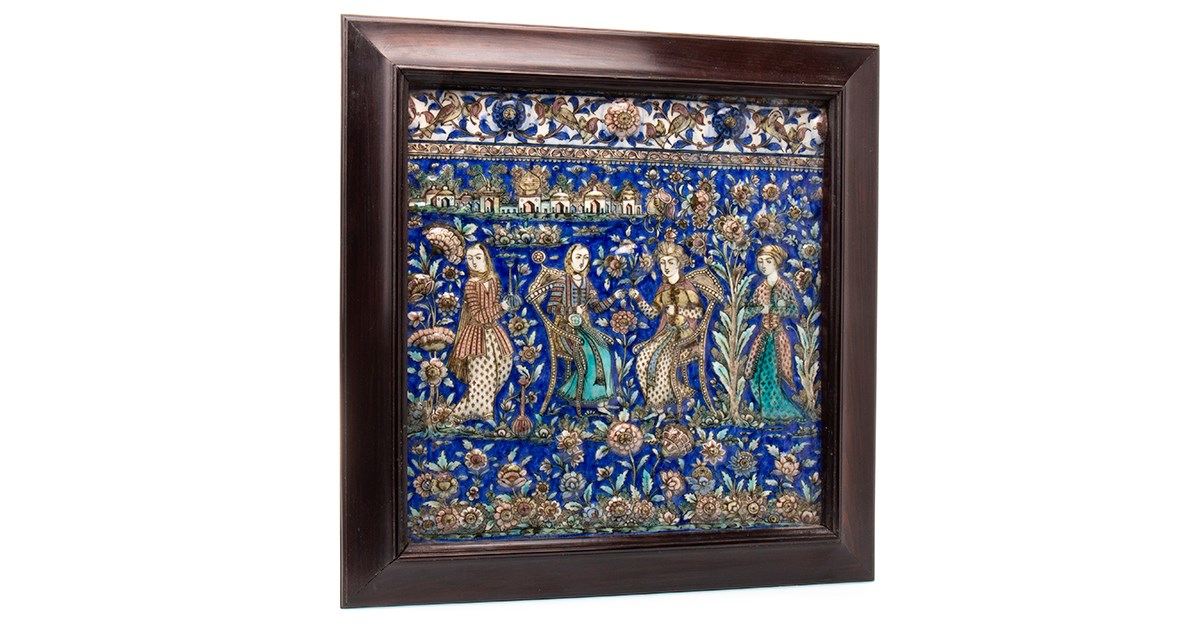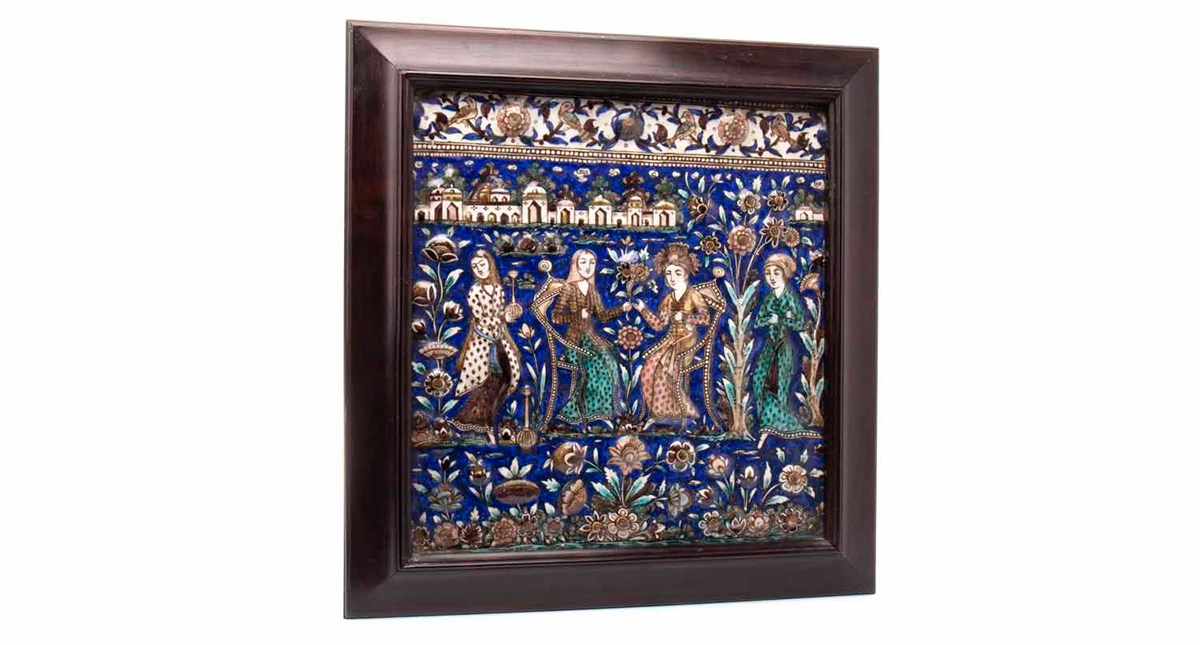Splendours of Qajar
During the Qajar dynasty of Iran, then the Sublime State of Persia, the pottery tile combined traditional craftsmanship with creative innovation. The Qajar tile facilitated artistic expression where this may otherwise have been limited by the basic construction materials available. In recent years, Qajar tiles have come to be appreciated, and accordingly studied, as recognition of the tile as ‘art’ has soared. On 19 July, two beautiful 19th century Qajar tiles, mounted in rosewood frames, will go under the hammer at the Asian Works of Art auction at McTear’s.
Tiles produced in the Qajar period were created for both practical and aesthetic reasons: fashioned to decorate the interior or exterior of buildings, adding architectural strength and aesthetic flare to buildings of both religious and secular uses, even adorning the homes of ‘ordinary’ people. Such tiles were produced across Iran, notably for example in Tehran, Isfahan and Shiraz. Many Qajar tiles originated in Tehran, which became the centre of Iranian life during this period on a political and cultural level.
Beyond the strengths of the Qajar tile in the realm of architectural design, their detail and grandeur have rendered the tiles somewhat of an art form in their own right. In fact, Qajar tiles feature in collections of the great collecting institutions across the world, including the Victoria and Albert Museum and the Metropolitan Museum of Art.
Their artistic decoration illustrates how the Persian royalty of old once lived. The tiles in lot 1033 and 1036 of the upcoming Asian Works of Art auction paint a beautiful and tranquil picture of noble life. Each tile portrays a landscape scene showing a distant architecturally impressive residence, with finely dressed figures in colourful outfits in the foreground amidst a flourish of foliage. Beyond this, with the eye-catching, vivid colouring of the tiles, it is easy to envisage the splendour of the Persian palace.
With such a rich heritage, these tiles are sure to attract competition when they go under the hammer on 19 July. With auction estimates of £1000- £1500, you don’t need to be a Prince or Princess to enjoy a little piece of the palace.
Hannah Murphy
What's it worth?
Find out what your items are worth by completing our short valuation form - it's free!

